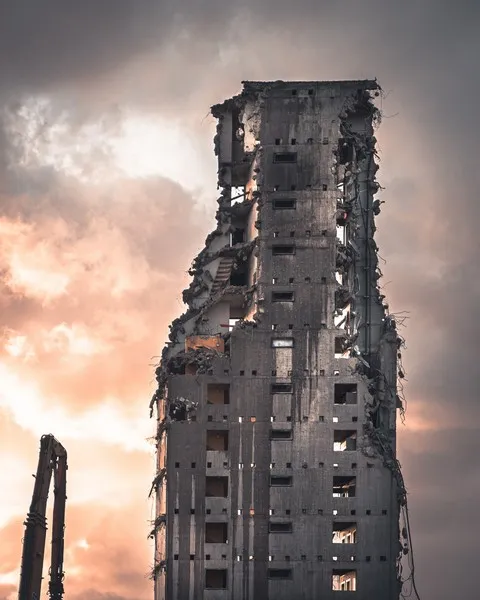Table of Contents
- The Social Construction of Natural Disasters
- Earthquakes as Religious and Moral Symbols
- Earthquakes as Political and Social Metaphors
- The Symbolic Economy of Disaster
- Earthquakes, Memory, and Collective Identity
- The Ecological and Existential Dimensions of Symbolism
- Conclusion: The Symbolic Aftershocks
Earthquakes are among the most dramatic expressions of the Earth’s power. They are sudden, unpredictable, and often catastrophic, reminding societies of their fragility before natural forces. Yet beyond their physical impact, earthquakes occupy a profound symbolic space in human culture. From religious interpretation to sociopolitical metaphor, earthquakes have long been used to signify upheaval, transformation, and renewal. This article explores how sociology interprets the symbolism of earthquakes—how human beings assign meaning to seismic events and how these meanings reflect broader cultural structures, values, and anxieties.
The Social Construction of Natural Disasters
Sociology reminds us that no natural event is purely natural in its social meaning. A natural disaster becomes a social event through interpretation, representation, and response. Earthquakes disrupt not only the ground beneath people’s feet but also the symbolic and institutional orders that sustain collective life. Thus, an earthquake’s meaning depends on social context: its cultural framing, historical moment, and the structures of inequality that mediate who suffers most.
From a sociological standpoint, earthquakes can be seen as moments of symbolic rupture—events that expose the fragility of social order and the limits of human control. They act as mirrors reflecting the moral, political, and religious narratives of a society. For instance, in some contexts, earthquakes are interpreted as divine punishment; in others, as opportunities for national solidarity or as metaphors for political change.
Earthquakes as Religious and Moral Symbols
Throughout human history, societies have sought to explain earthquakes in moral or spiritual terms. Before the rise of modern seismology, earthquakes were often interpreted as signs of divine wrath, cosmic imbalance, or moral decay. This moralization of seismic activity reveals much about how societies construct meaning from the unknown.
The Sacred and the Profane
Drawing on Émile Durkheim’s concept of the sacred and the profane, we can understand earthquakes as moments when the boundaries between these realms are blurred. An earthquake is a sacred event in that it disrupts the ordinary flow of life and evokes collective emotional responses such as fear, awe, and reverence. The physical trembling of the earth becomes a symbolic trembling of the social fabric—a temporary collapse of the profane order that allows sacred meanings to re-emerge.
For example, after devastating earthquakes, many communities experience a resurgence of religious practices or spiritual reflection. The event prompts existential questioning and collective rituals of mourning and rebuilding, reaffirming social solidarity and moral order. In this sense, the earthquake functions as both disruptive and restorative: it destroys, but it also reaffirms collective meaning.
Moral Panic and Divine Retribution
Earthquakes often generate moral discourses about guilt, sin, and redemption. Sociologists of religion note that communities sometimes link earthquakes to perceived moral failings—interpreting them as divine correction. Such interpretations serve social functions:
- They provide explanations for otherwise inexplicable suffering.
- They reinforce moral norms by associating transgression with punishment.
- They produce unity by directing fear and uncertainty into shared ritual and belief.
Even in secular societies, remnants of these moral explanations persist. Media narratives may subtly attribute disasters to human arrogance or ecological irresponsibility, framing the earthquake as a warning from nature rather than from a deity.
Earthquakes as Political and Social Metaphors
Earthquakes have long served as metaphors for political revolution, social change, and structural transformation. Sociologists interested in language and power note how seismic metaphors pervade political discourse: revolutions are described as seismic shifts, economies experience shocks, and social movements cause political tremors. Such metaphors translate the unpredictability and force of geological events into the social realm.
Metaphor and Structural Transformation
From a structuralist perspective, earthquakes as metaphors capture the sudden collapse of established systems. They suggest that beneath the apparent stability of the social world lies a deep reservoir of tension—economic, racial, or political—that can erupt unexpectedly. This aligns with Marxist and conflict perspectives, which view social structures as inherently unstable due to contradictions between classes or interest groups.
For instance, the phrase social earthquake may describe a mass protest that destabilizes political power. The metaphor’s resonance lies in its dual sense of destruction and creation: old structures crumble, allowing new ones to form. Thus, the symbolic power of earthquakes lies in their capacity to articulate the dialectics of crisis and renewal.
The Politics of Reconstruction
Post-earthquake reconstruction offers another layer of symbolism. Rebuilding after disaster becomes a performance of national resilience and political legitimacy. States often use recovery efforts to demonstrate their competence, compassion, or moral authority. Conversely, failures in reconstruction—unequal aid distribution, corruption, or neglect—expose the fissures of power and inequality.
Sociologically, reconstruction processes reveal who is included or excluded in the symbolic project of national recovery. Marginalized groups—such as the poor, migrants, or ethnic minorities—often suffer disproportionate losses and receive inadequate support. The earthquake, therefore, becomes a metaphor for both physical and social vulnerability, shaking not only the earth but also the myths of equality and progress.
The Symbolic Economy of Disaster
Get the full article AD FREE. Join now for full access to all premium articles.
View Plans & Subscribe Already a member? Log in.





